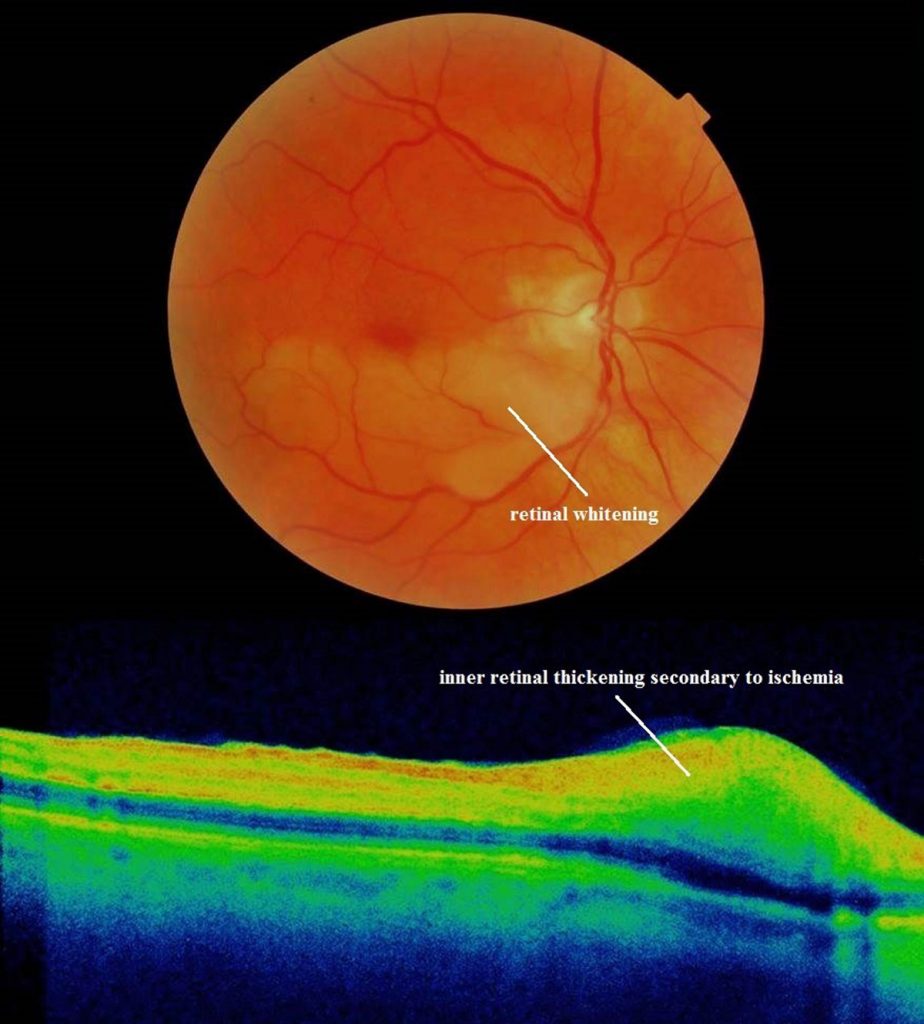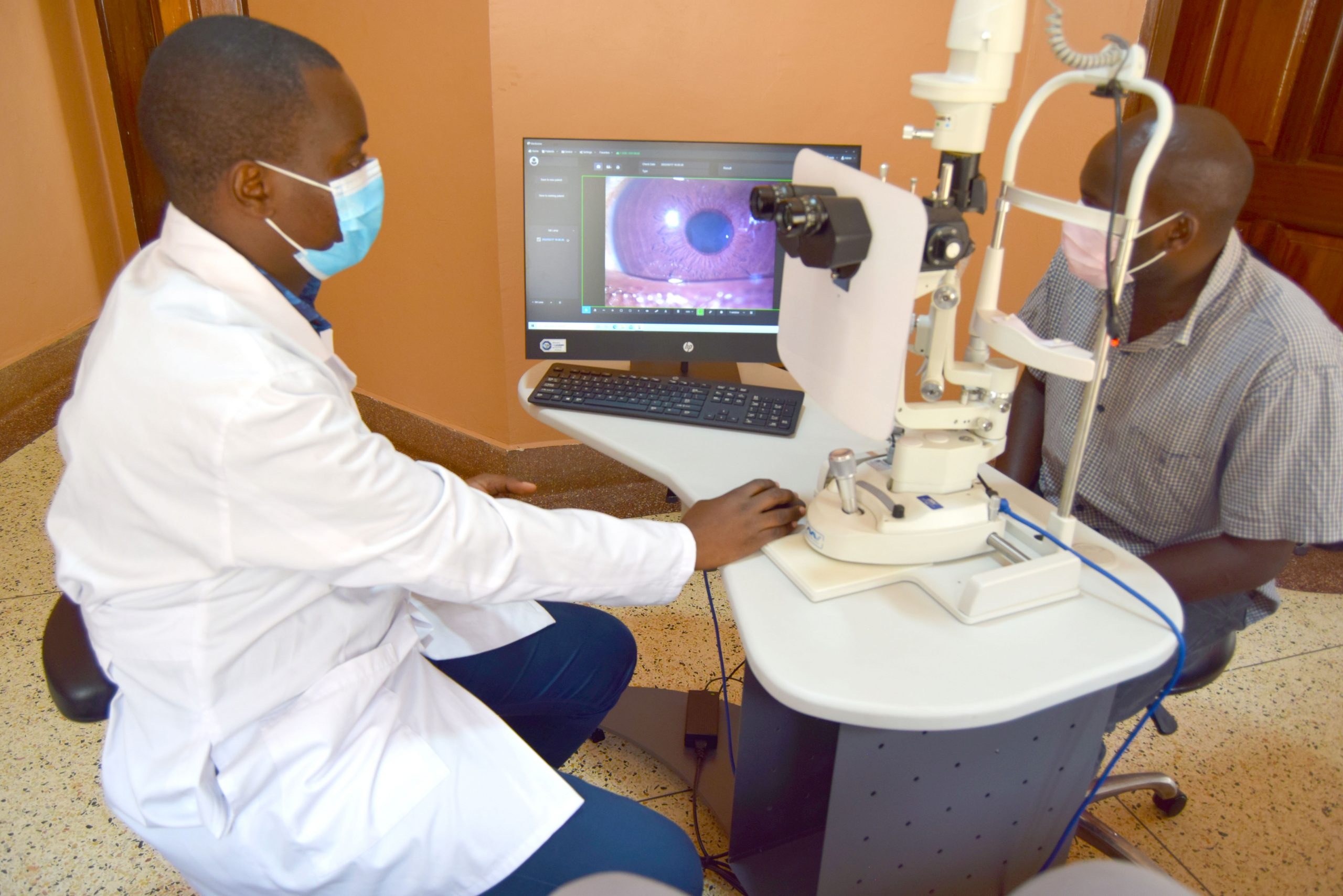How eye exams can detect heart disease
Studies show that people with heart disease tend to have retinas marked by evidence of eye stroke.
Eye strokes happen when the eye is deprived of blood flow and oxygen, causing cells to die. This creates a mark or a lesion. These marks can be spotted when ophthalmologists use a specialized imaging tool called an Optical Coherence Tomography, or OCT, to take a close look at the retina.
The following OCT scan shows blockage of blood flow to the retina, formally known as retinal artery occlusion.

OCT scans are a valuable way to detect disease and dysfunction in all parts of the body — not just the eyes. Eye scans can detect signs of Alzheimer’s, Parkinson’s and other underlying health conditions. The eye is the only place in the body where a doctor can see the live action of blood vessels, nerves and connecting tissue without relying on an invasive procedure. That’s why eye doctors are often the first to detect health conditions including high blood pressure, high cholesterol, stroke and more.
For people with heart disease — the number one cause of death worldwide — early diagnosis and treatment could help stave off a heart attack or stroke. Ophthalmologists will refer patients to a cardiologist when they spot eye strokes on an OCT scan, especially if the patient hasn’t had a comprehensive health check or even a family history of heart disease.

